Golden Week is here, so it’s time for my usual long ride.
Honestly, I’m not a big fan of riding when so many people are out and about.
When traffic volume increases, so does the accident rate—not just as a victim but as a potential perpetrator, too.
Plus, no matter where you go, everything is super crowded and takes forever.
That said, a rider can’t just let a rare holiday slip by.
This year’s holidays have a perfect weather forecast from the 3rd to the 5th.
That means a 2-night, 3-day touring trip is pretty much a given, right?
If I can stay for two nights, I want to go somewhere farther—somewhere that’s tough to reach on just a single night trip.
So, I finally settled on a destination I’ve always wanted to visit: Ōma, Aomori Prefecture, the northernmost tip of Honshu.
I wonder what kind of roads are waiting for me…
Trip Preparations
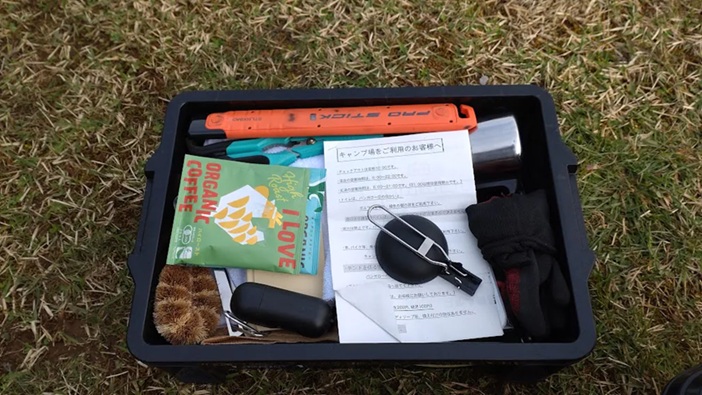
The top priority is a flat tire.
I’ve got a tire repair kit stored on the bike, but it’s not like a flat always happens in a convenient spot.
So, I’m also bringing a can of sealant that can fix it with just a quick spray.
Other essentials include a clutch cable, fuses, and frequently used tools.
Sometimes you see people carrying a whole bunch of spanners and wrenches, but I don’t think you really need the sizes you rarely use.
I mean, are you really going to remove the axle shaft on the road? Probably not, right?
If it comes to that point, you’ve just got to resign yourself to calling for a tow.
Day 1
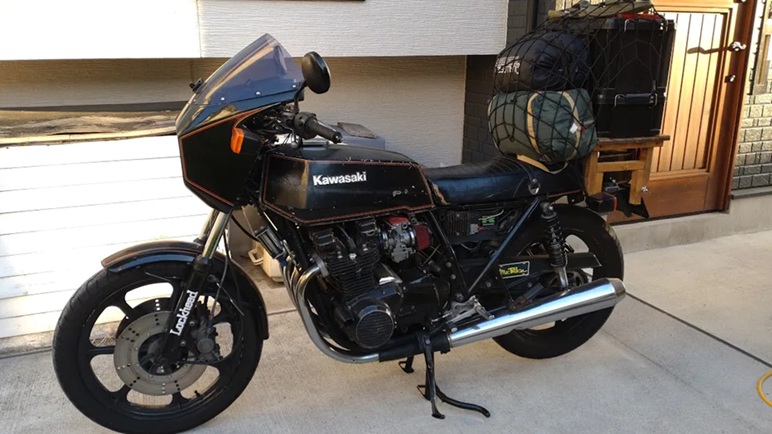
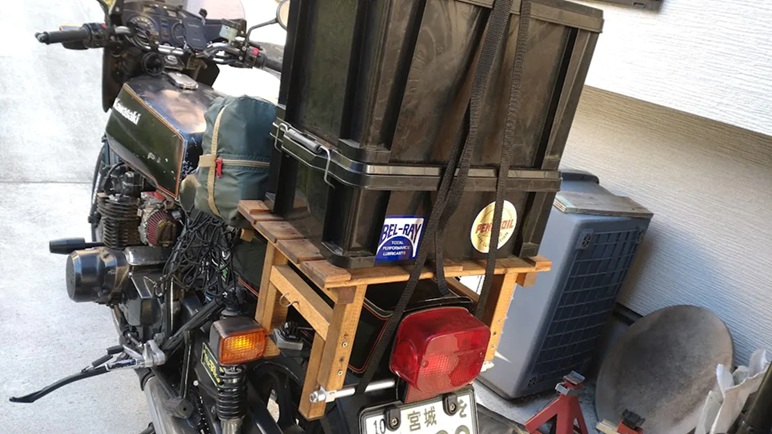
I was supposed to head out around 5:00, but I fumbled with packing and lost about 30 minutes.
While I was rushing around, it got warmer, so I ended up stowing away my fleece and down vest.
I hit the highway from the IC just a few minutes from home and prioritized speed as I headed north.
Even though the temperature was supposed to rise above 20°C later, it was pretty damn cold in the morning.
The dumbest move I made was choosing summer gloves.
My fingertips were freezing, and I had no choice but to layer some work gloves I had stuffed in the tent. (laughs)
In the end, I put the fleece and vest back on and even added a neck warmer.
When the temperature swings this much, you’ve got to prepare for the colder side of things.
About 200 km later, it was 8:00.
I got off the highway at Yamada Town and filled up the tank.
I had topped off the tank before departure, and this time it took 10.45 liters, which means a fuel efficiency of almost 20 km per liter.
TM-MJN carburetor—still as reliable as ever.
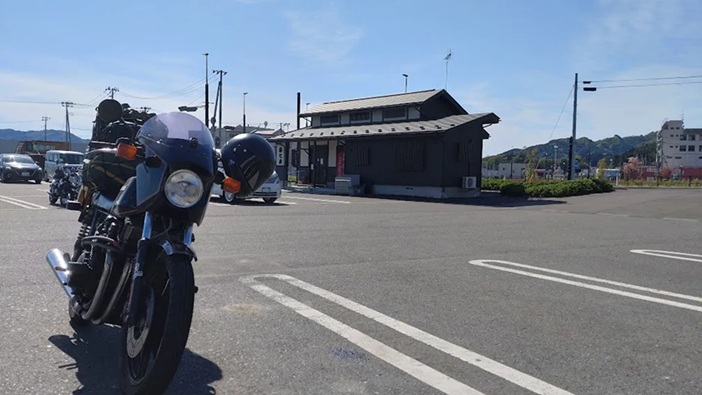
While munching on an onigiri at a convenience store, some local biker seniors struck up a conversation with me.
They said they were heading to a newly opened roadside station in Kuji.
Then, from the other side, a guy on what looked like a Z1 came riding up.
He also seemed like a senior rider and said he was from Miyagi.
When I mentioned I was aiming for Ōma, they all looked shocked.
Is it really that far?
Since the goal was still far ahead, I politely excused myself and continued northward.
After passing Hachinohe, I arrived in Noheji Town at around 11:30.
Noheji Town sits at the base of the Shimokita Peninsula, facing Mutsu Bay.
Apparently, it used to thrive as a key trading hub, and the port still has ships like this.
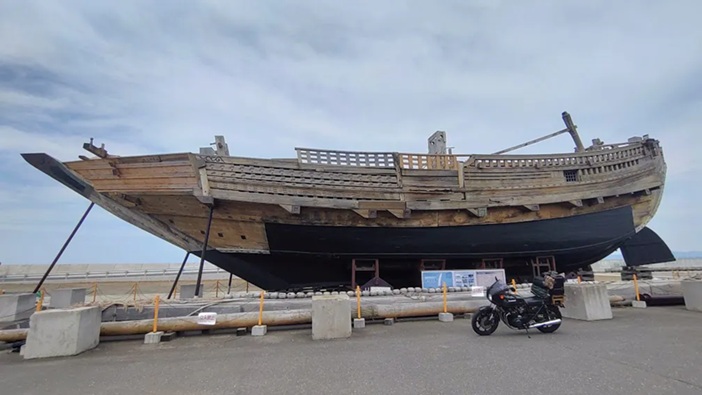
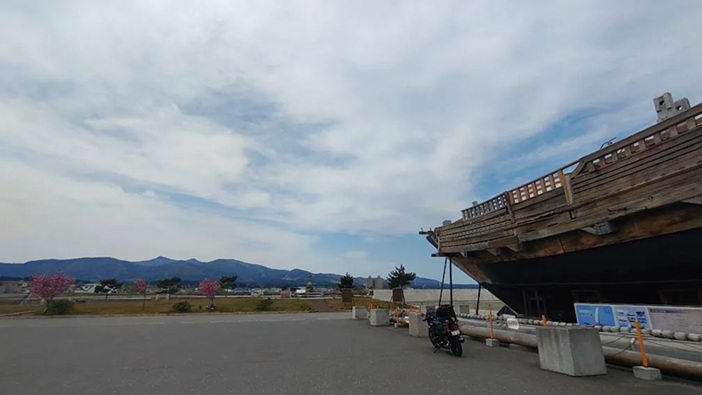
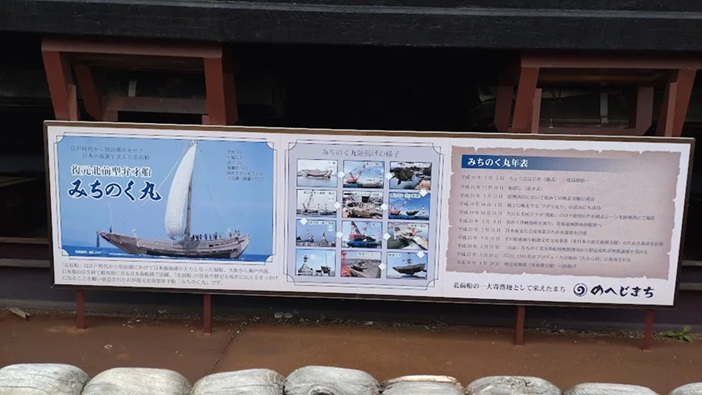
I randomly stumbled upon a place called “Soba Kappo Nagahama” and decided to go in.
It had that cozy vibe of a place beloved by the locals.
Not only did they serve SOBA noodles, but they also had a sashimi set meal on the menu.
Time to power up with some fresh seafood!
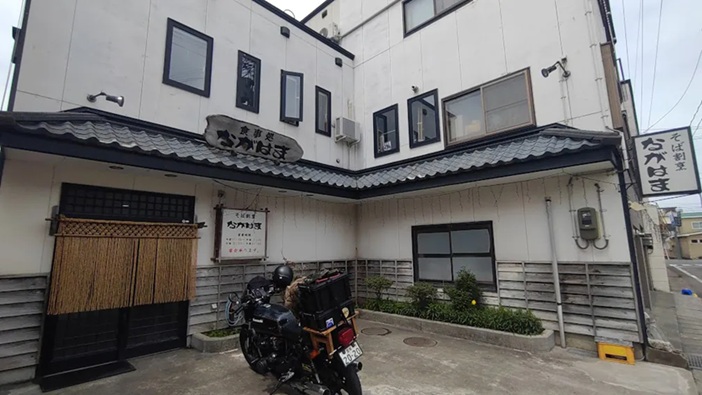

For 1,000 yen, that’s quite a reasonable price, isn’t it?
After filling up the tank once more, I set off toward Mutsu City.
Everyone has their preferences, but if you’re going to circle the Shimokita Peninsula, I recommend going clockwise.
That way, you get to ride with the ocean on your left, making for a much better view.
If you go the opposite way, you’ll be looking across the opposite lane to see the scenery.
Plus, when you want to stop for a photo, you’ll often have to cross over to the other side.
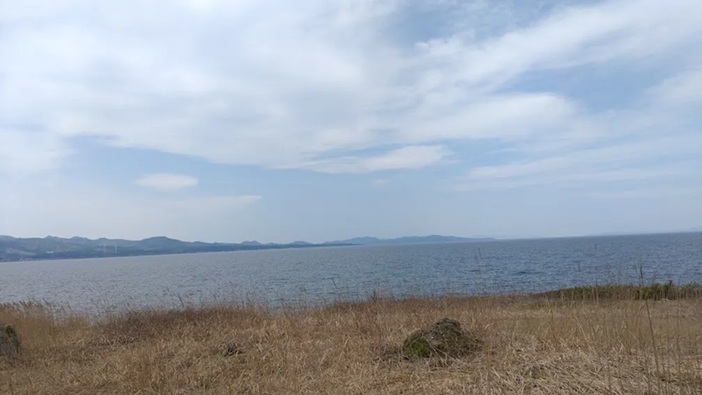
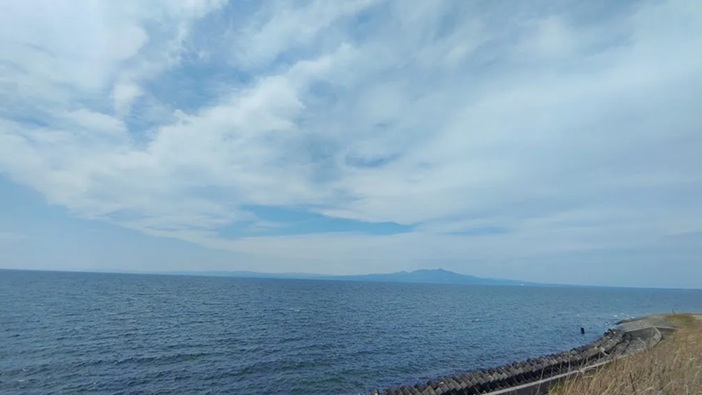
Today’s main destination is “Osorezan” (Mount Osore).
It’s counted as one of Japan’s three great sacred sites, but to be honest, I had no real sense of what it was like.
I just knew vague bits and pieces—like how there are “itako” (spirit mediums) who channel the souls of the dead, and something like Sainokawara, where souls are said to gather.
In this age where you can look up anything, I intentionally avoided researching it beforehand—figured I’d go in without preconceived notions.
OSOREZAN
Getting to Osorezan isn’t difficult at all.
You start seeing signs for “Osorezan” from quite a distance away—just follow them, and you’ll get there.
Even when you enter Mutsu City’s downtown area, you probably won’t get lost.
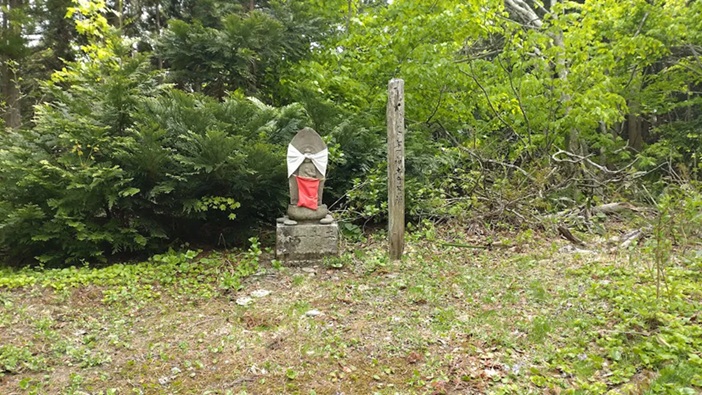
The road gradually turns into a lonely mountain pass, winding through the hills.
Along the way, I spot stone statues of Jizo and Kannon standing by the roadside, adding to the eerie atmosphere bit by bit.
And then, finally, a gate appears in the middle of the road.
It reads, “Sacred Site Osorezan.”
Could this be the boundary between this world and the afterlife?
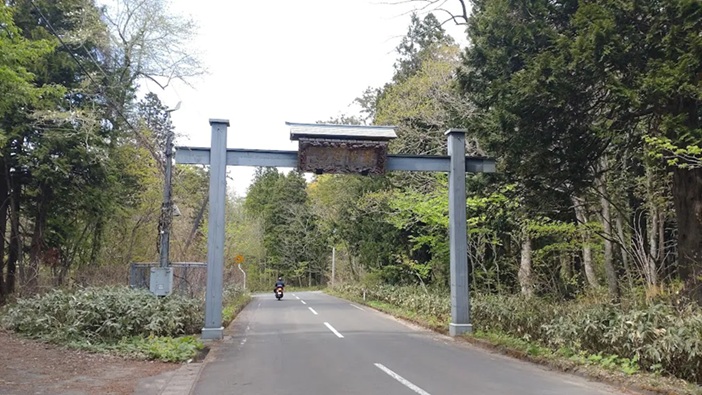
As I keep riding, the smell of sulfur gradually fills the air.
Descending down the mountain pass, I come across some eerie-looking stone statues.
Is this a “Welcome to HELL” kind of vibe?
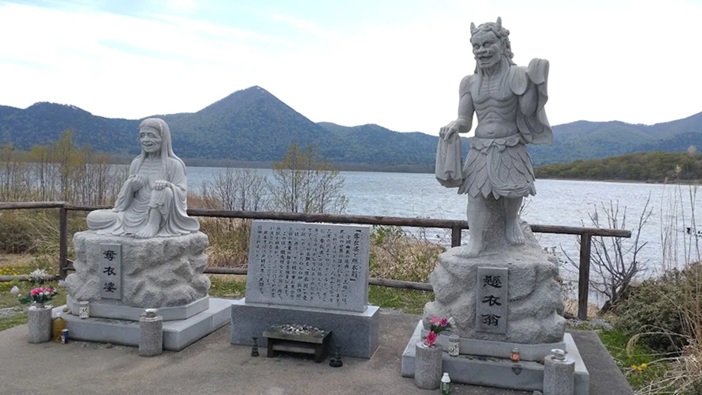
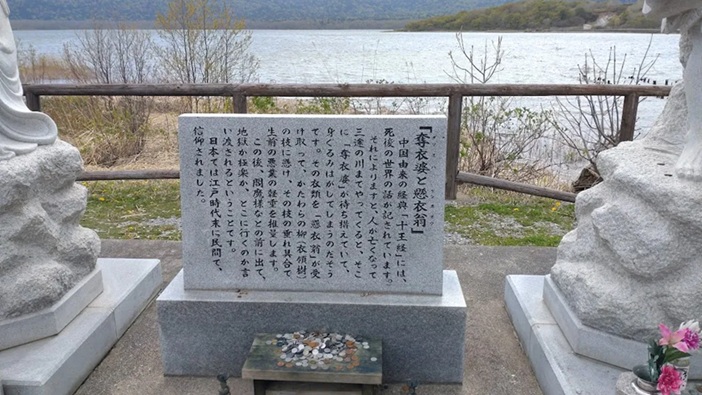
When people die, this old woman strips them of their clothes, and the old man next to her weighs the garments to judge the sins they committed in life.
If I were to leave this world, I’d probably show up here wearing leather and denim, so that’d be pretty damn heavy, wouldn’t it?
Forget about bending—more like snapping right in half.
Either way, there’s no escaping a one-way ticket to hell.
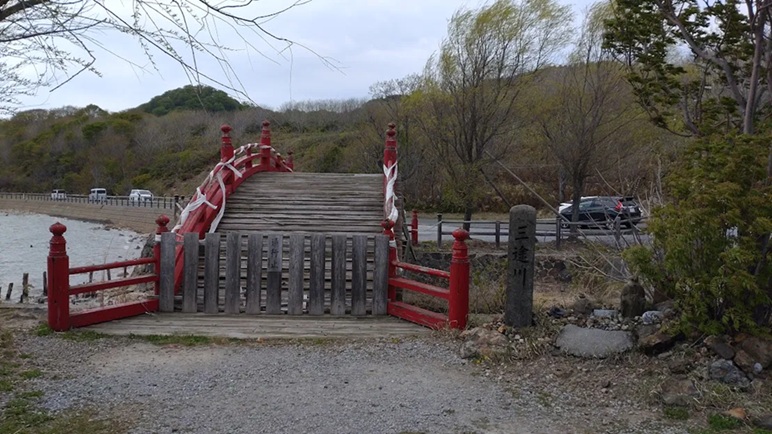
Next to that stands the Sanzu River.
It’s set up so you can’t cross it now, but… man, it’s creepy as hell.
I bet coming here at night would be absolutely terrifying.
The parking lot is packed with tourists’ cars.
There are also plenty of bikes parked.
Standing by the side of the parking lot are some rather imposing figures looking down at us… apparently called the “Six Jizo.”
They say that for the 5.67 billion years until Maitreya Buddha returns, these Jizo statues will keep saving souls… Sorry if I got that wrong.
Honestly, whatever works—just save us… I’m begging you, seriously.
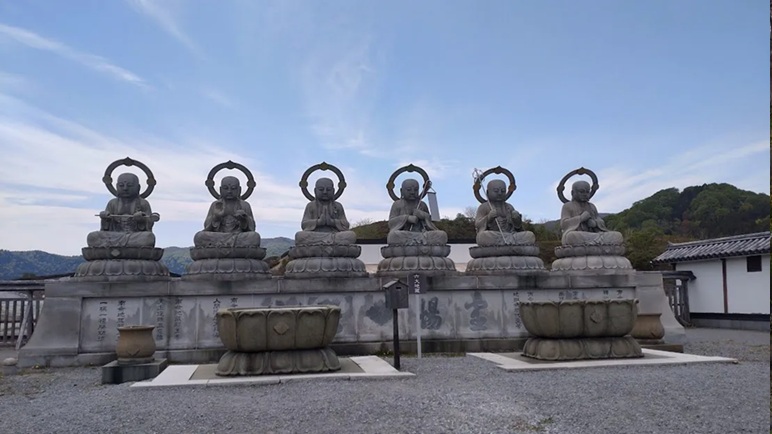
You need to pay an admission fee to enter the deeper part of Osorezan, but come on—who’s gonna be stingy after coming all this way (lol)?
It’s not like I get to visit this place often, so yeah, I’ll gladly pay up.
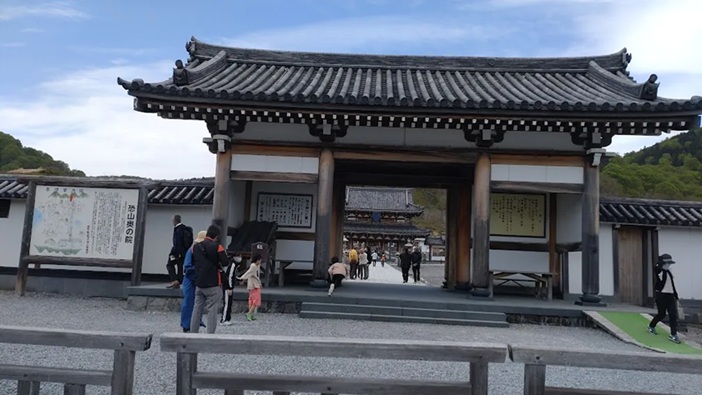
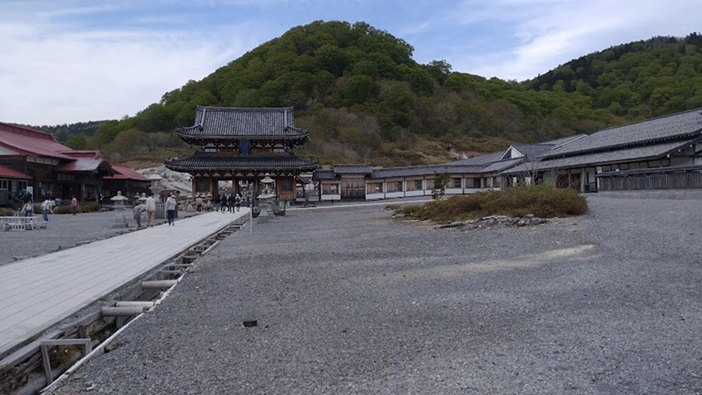
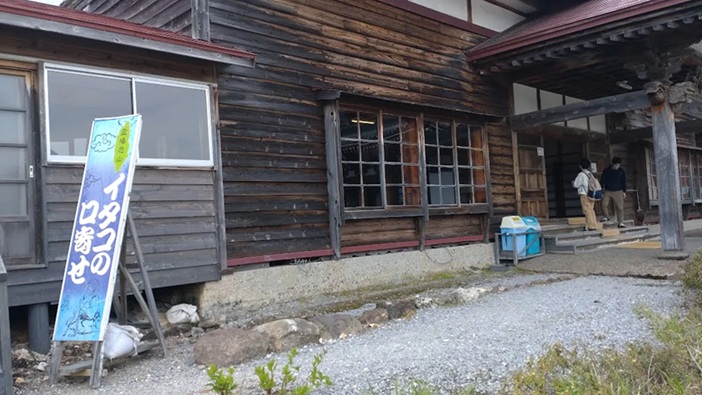
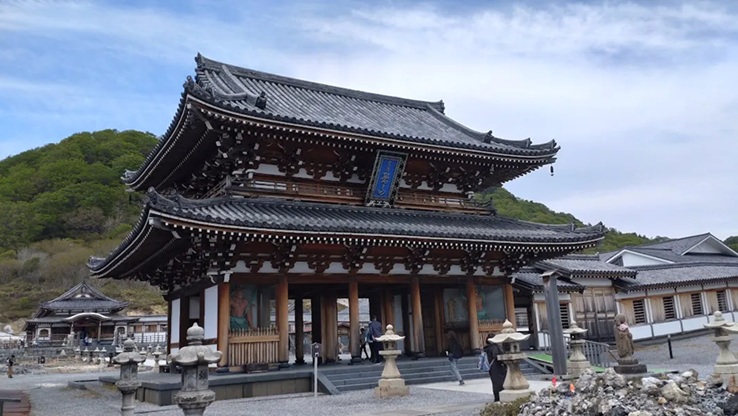
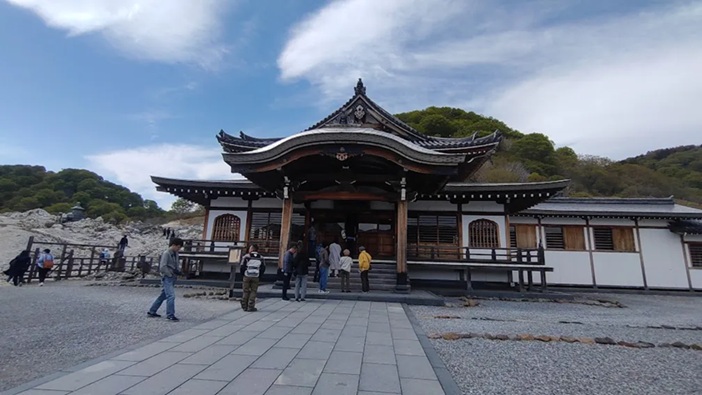
Passing through the front gate, it looks like your typical temple or shrine at first glance.
But to the left, an eerie, desolate landscape of rugged rocks stretches out.
It’s exactly the kind of scenery you’d picture when thinking of hell.
That said, there are plenty of tourists around, making it surprisingly lively (lol).
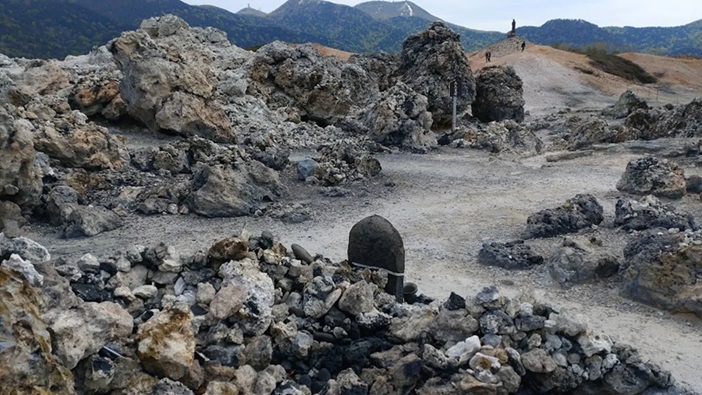
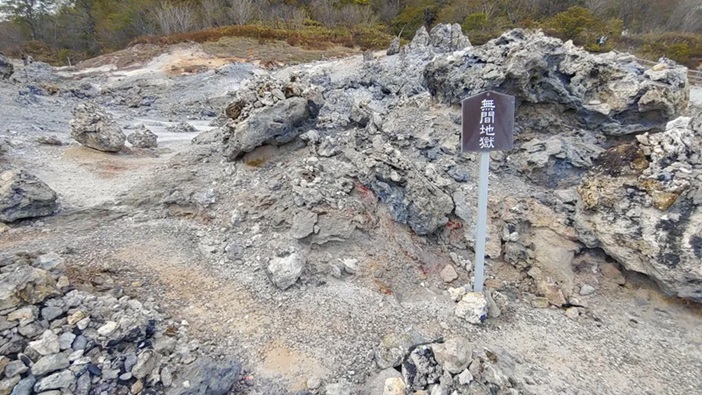
Here it is—Mugen Jigoku (The Hell of Incessant Suffering).
They say that those who have committed grave sins are subjected to unimaginable torment here, so intense that the other seven hells would feel like a walk in the park.
But you know, there are people who are already living that kind of torment in this world…
Honestly, if someone has atoned for their sins during their lifetime and carried that burden until death, I think it’s fair to just let them off the hook and send them to heaven.
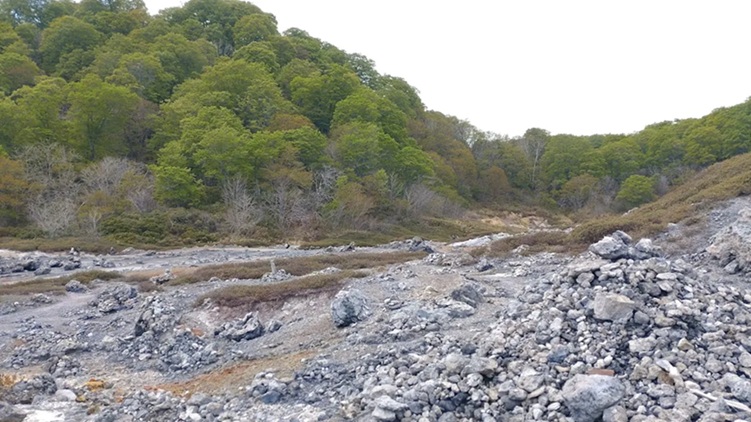
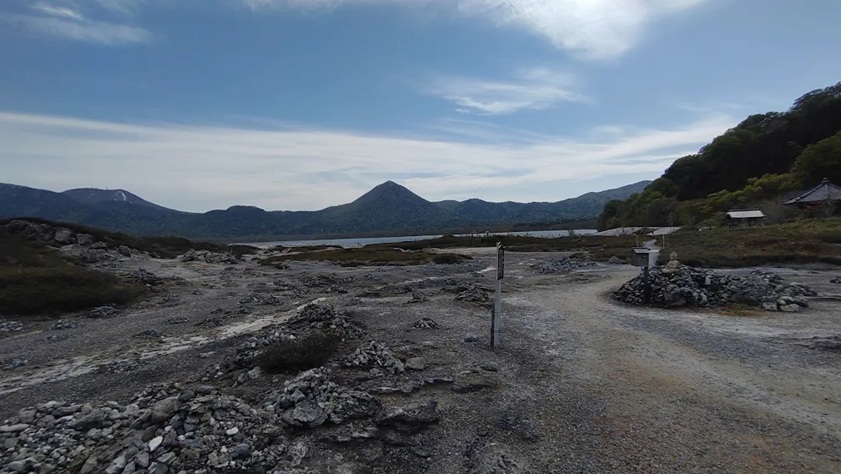
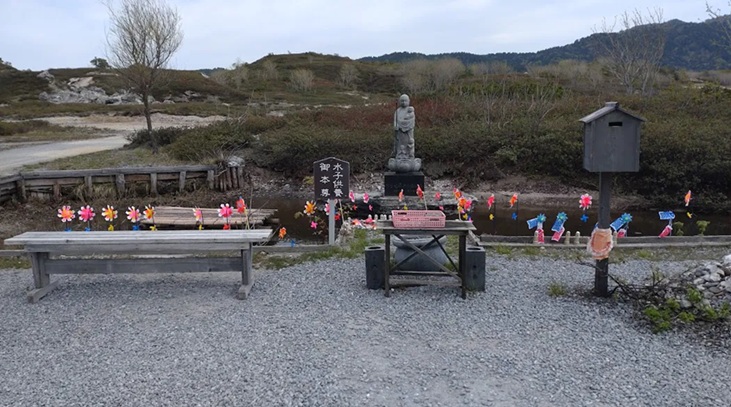
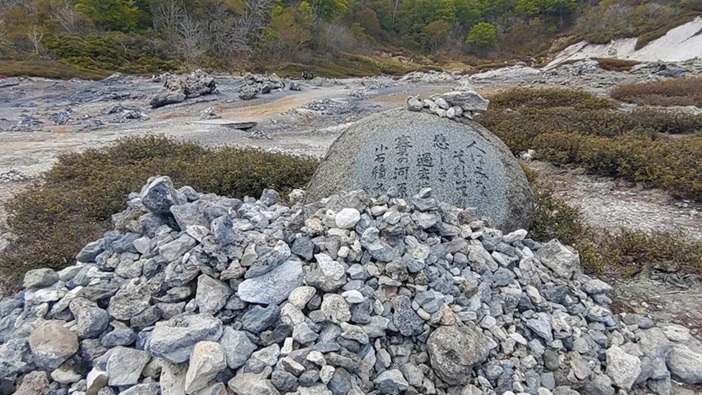
In front of a stone monument that reads, “All people carry a sorrowful past, piling stones at the Sainokawara,”
there was this old guy with a girl who looked like a hostess from a Filipino pub.
He was trying to explain the meaning in English, but after “All people…” he just couldn’t continue (lol).
Dude, don’t make Osorezan your date spot… Plus, you totally missed the point!
But you know, maybe it’s good to face the depth of human sinfulness—
to confront the countless sins one has committed.
Nearby, a group of people—perhaps a family mourning a lost child—were quietly piling stones together.



Going further in, I arrived at Gokuraku Beach.
If you just take this spot, it’s a beautiful landscape.
But when you look back… hell is spreading right behind you (lol).
I don’t believe in the occult at all, or rather, I’d say there’s no way such things exist!
Still, it’s not a place I’d want to linger for long.
People who claim to have spiritual sensitivity say they can see tens of thousands of spirits here.
What if some of the people here were wandering spirits themselves?
I’ve never seen anything like that, though (lol).
After staying for about an hour, I left Osorezan behind.
The campsite I chose for tonight is “Mutsu Municipal Kawauchi Campsite.”
There’s a hot spring called “Fureai Onsen Kawauchi” right next door, so I’ll set up the tent, take a bath,and for dinner, I figure I can find a restaurant somewhere around National Route 338.
If it’s just 15 minutes one way, I might as well eat first and take my time bathing afterward.
Thinking stuff like that while riding.
It’s about 50 km from Osorezan—an hour’s ride.
The campsite reception must be at the hot spring building, right?
I walk into the hot spring facility and ask at the reception.
“What? The campsite? We closed that quite a while ago.”
“Closed?”
“Yeah, maybe because of COVID or something, about two years ago. It’s been shut down.”
Stunned.
I didn’t see anything about it on Google Maps, but… oh, it’s written in the reviews!
Come on, just mark it as closed!
Now what?
Where’s the nearest campsite from here?
I checked, and… there are a few near Osorezan (lol).
So I have to go back the way I came—damn it!!
Crying or cursing won’t help.
There’s just the emptiness of retracing my steps…
Come to think of it, I messed up on campsites last year during Golden Week, too.
Seems like campsites are cursed for me.
Speaking of which, I remember seeing “National Yagen Campground” on the way to Osorezan.
There’s a hot spring nearby too.
Maybe I can chill there.
Back to Mutsu city center and then back onto the mountain road.
Mutsu Yatate Onsen Campground
Then I spot a sign for “Mutsu Yatate Onsen Campground.”
It’s closer to Mutsu city center, so I’d have plenty of dinner options too.
I rode past it once and had to make a U-turn.
Right then, I almost dropped the bike—gripped the clutch and brake at the same time.
Usually, it would’ve gone down, but I yanked it back up with my right hand.
That was close.
Guess all the muscle training lately is paying off.
As I kept heading to the campsite, I hit another obstacle—a blind curve where two cars got stuck.
Full braking, rear wheel slipping, but somehow managed to avoid a crash.
Two close calls in a row… that was intense.
The campsite is managed by Mutsu Yatate Onsen.
Since it’s Golden Week, it’s super crowded, and I had to wait over 15 minutes just to check in.
The campsite is on the hot spring inn’s premises and isn’t that large—maybe 30 meters per side.
When I arrived, a few fellow riders had already pitched their tents.

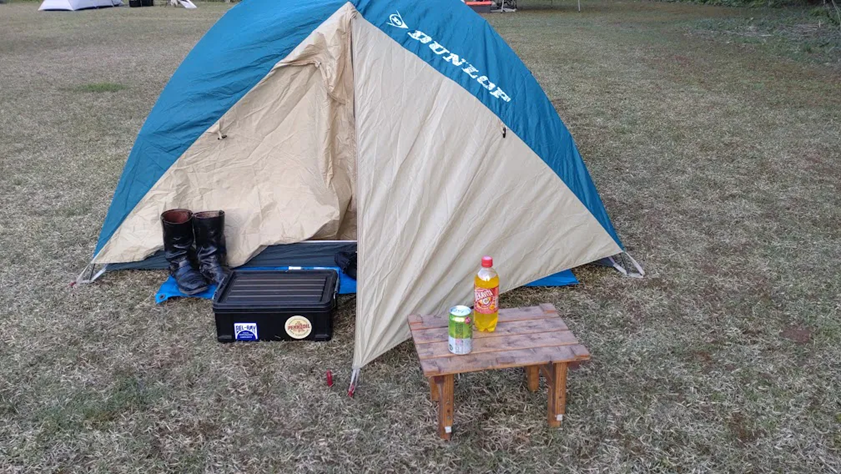

I missed the part about motorcycles and cars being prohibited from entering the campsite (since other riders had brought their bikes in), and ended up riding in… straight into a mud pit!

For the first time in ages, I got my bike stuck (lol).
Managed to get it out somehow, but it was seriously risky.
Sorry for leaving those ruts behind…
I quickly unloaded my stuff and pitched the tent in no time.
This part I’m pretty good at—done in just a few minutes.
It’s already 5 PM by this point.
Normally, I’d be rushing to get dinner ready, but today I’ve decided to eat out, so I’m totally relaxed.
Lunch was sashimi, and tomorrow morning or afternoon will be seafood in Ōma.
Not sure if I can pull it off like Goro Inogashira, but for now, let’s head into town.
I chose a place called “Kitchen Hanakado.”
It’s on the main road stretching east from JR Shimokita Station.
Maybe because it was still early, there was only one other group of customers.

When the place is lively, being on your own feels a bit awkward.
Glad I came early.
The menu features all the classic Western dishes—hamburg steak, fried shrimp, and the like.
Their recommendations are beef stew or beef tongue stew.
Since I can have beef tongue back home anytime, I went with the rarely ordered beef stew.
Here it is.
The demi-glace sauce is rich but not heavy.

The beef is slow-cooked and tender.
If “addictive deliciousness” had a definition, this would be it.
Polished it off in no time.

When I stepped outside, one of the slightly intimidating-looking guys who had arrived earlier called out to me.
“Hey, is that a Z1R?”
“Even without the side covers, you recognized it? Impressive.”
“I ride a GSX1100S and a ZRX.”
We hit it off, talking bikes and stuff.
“Take care and enjoy your ride!”
Man, that was really nice and made me happy.
Picked up some alcohol at the convenience store and headed back to the campsite.
The onsen operates from 6 AM to 10 PM, so it’s open for a relatively long time.
Admission is 500 yen, but keep in mind that the valuables locker costs 50 yen and the hair dryer costs 30 yen.
Also, they don’t provide shampoo or soap, so make sure to bring your own.
I can only speak for the men’s bath, but it’s not particularly spacious, nor is it cramped—somewhere in between.
The hot spring itself is around 52 degrees Celsius, and they cool it down with water, but it’s still pretty hot.
People who like their baths hot will probably love it, but if you’re more into soaking in lukewarm water, it might be tough.
It took me quite a while to get used to it (laughs).
I wanted to loosen up my stiff body with a good soak, but I might’ve been unconsciously tensing up the whole time…

After getting out of the bath, I just chilled out.
While checking the route for tomorrow, I ended up dozing off around 7 PM.
The snoring from the rider in the neighboring tent was insane, and it kept me up all night.
Sure, it’s a natural thing, but if you know you snore, wouldn’t it be considerate to pitch your tent a bit farther away?
Before setting up his tent, he was all serious about inspecting the ground and stuff…
Dude, that’s not the spot you should be worried about! (laughs)
And then there’s the cold at night, despite how warm it was during the day.
Lately, I’ve been cutting corners with my gear and sleeping directly on the ground, but honestly, I should be using a mat.
It makes a real difference in how well you recover from fatigue.
In the end, I slapped a disposable body warmer on my back to survive the night (tears).

By the way, today’s mileage (from departure to arrival):A miraculous 600 km on the dot.
DAY2
I kept dozing off and waking up repeatedly, and finally got up around 5 AM.
I didn’t bother cooking breakfast, but I boiled some water and made coffee.
There’s a free foot bath at the onsen, so I took a moment to relax there.


As I was packing up to leave, another rider struck up a conversation with me.
He was riding a naked bike with a Kanto area license plate, but he said he actually lived in Miyagi Prefecture.
Turns out he was also a fan of “Mr.BIKE.”
I didn’t bring up the old days, but I bet there are plenty of folks in their 40s and 50s who used to buy every issue back then.
It was a pretty unique magazine, and that chaotic vibe is something you just don’t see anymore.
Though it’s a different genre, “Headbang(Magazine for Heavy Metal fan)” kinda has that same chaotic energy.
I said goodbye to the rider from Sendai and set off for Ōma.
If I just headed straight to Ōma, I could take the east route and be there in about an hour, covering roughly 50 kilometers.
But this trip is all about soaking in the essence of the Shimokita Peninsula.
If I’m going to do it, I’ve got to ride it clockwise from the root!
So, I’m aiming west.
By the way, this route is 118 kilometers—about three times longer than the direct one. (LOL)
First, I’m heading toward Hotokegaura.
Riding along the southern coast of the Shimokita Peninsula, I can catch glimpses of the ocean.
Across Mutsu Bay, I can vaguely make out what It’s a bit hazy today, so visibility isn’t great, but I bet in winter, you’d get a clear view of the other side.might be Hiranai Town or Aomori City…


National Route 338, which had been running along the coast until now, suddenly transforms into a mountainous route as it enters Wakinosawa.
And let me tell you, it’s a blast.
As you venture deeper into the mountains, the road turns into a winding course that’s surprisingly easy to ride.
I’ve tackled winding roads all over the place, but this one’s genuinely fantastic.
And get this—despite it being Golden Week, traffic was practically nonexistent.
I could ride at my own pace and savor the road to the fullest.

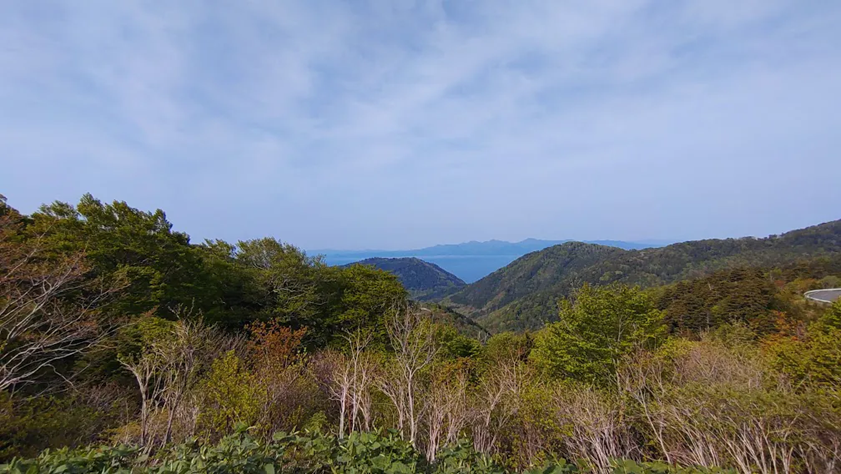

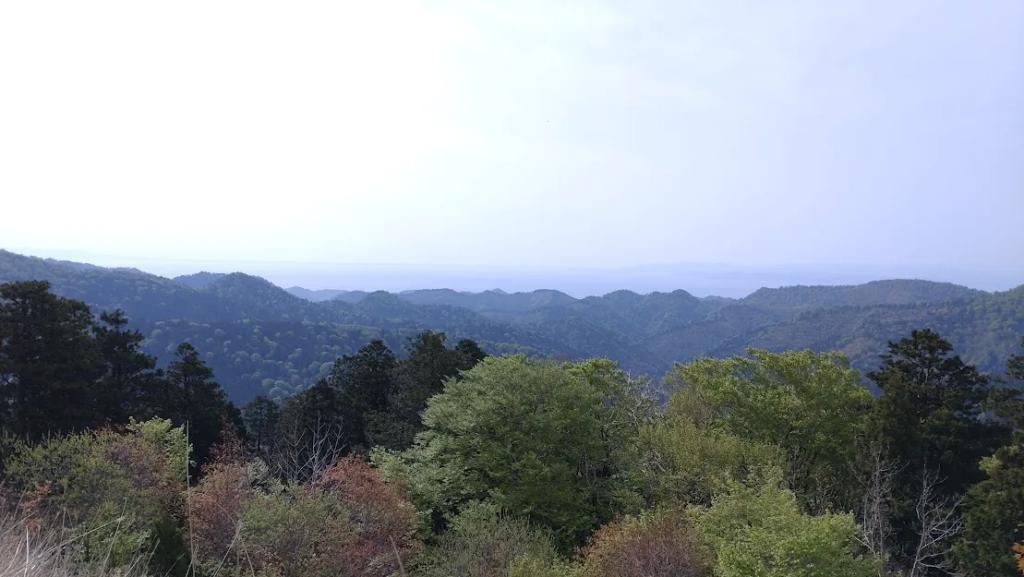
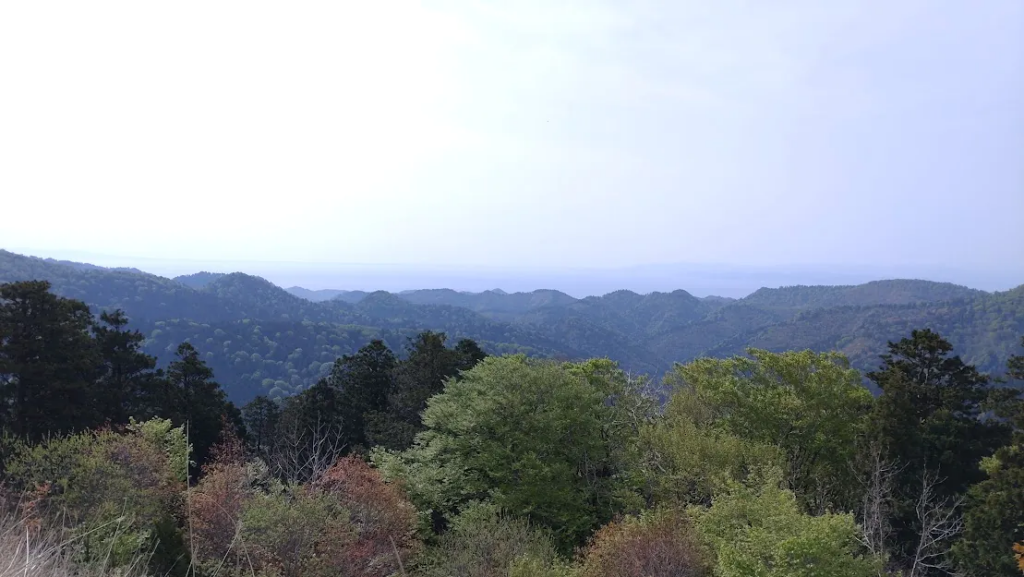
HOTOKEGAURA
By the time the winding road comes to an end, I arrive at Hotokegaura.
Hotokegaura is a scenic spot where gigantic, oddly-shaped rocks are lined up.
t’s not quite like Osorezan, but apparently, some people have called it a gateway to the spirit world.
However, to fully appreciate the whole view, you have to descend a steep staircase for about 20 minutes from the parking lot nestled in the mountains.
Naturally, you’ll have to climb back up the same way on your return.
There are plenty of stick-like branches lying around to use as makeshift walking sticks, but it’d be a good idea to bring trekking poles.
It’s not so much about getting tired—if you’re not used to walking or your shoes aren’t suited for mountain hiking, your legs and back will take a beating.










When I got back to the parking lot, I found a group of old-school leather-and-denim-vest bikers.
They asked me if they could make it down, but as the sign clearly states, it takes 20 minutes to descend and 30 minutes to climb back up.
In other words, you’re looking at a solid hour of hiking.
“I think you’d better watch your knees,” I just replied.
That’s all I said—hopefully, they got the hint.
I just wanted them to figure it out from there.
Until just before winter, I used to run about 7 km every night, but even so, it was pretty rough. (LOL)
To cool down my sweat-soaked body, I fired up the machine and hit the road.
About an hour after leaving Hotokegaura, I finally made it to Ōma.
Ōma

It’s probably a fishing town, but at this point, it’s become a major tourist spot.
Maybe it’s because TV shows have featured Ōma’s tuna fishermen, making it famous.
The shops aren’t exactly restaurants—they’re more like makeshift setups made from containers and prefab structures.
Thanks to the holiday and good weather, every place had a line out the door.
And this was still before lunch, so I can only imagine how crazy it gets at lunchtime.

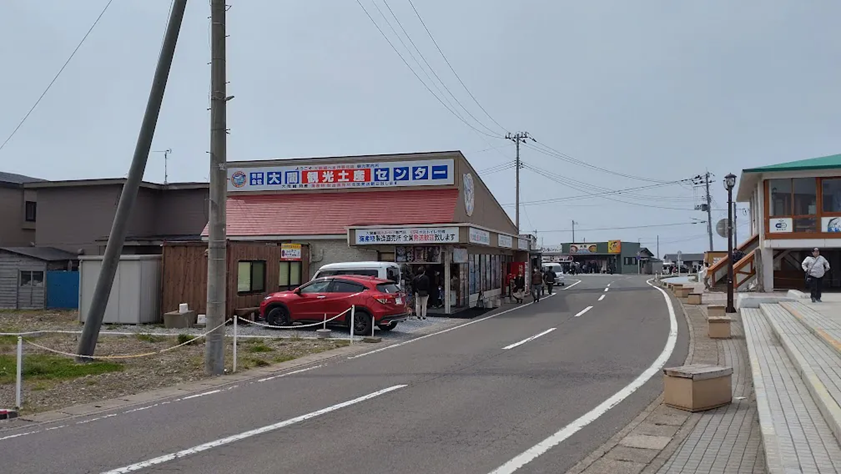
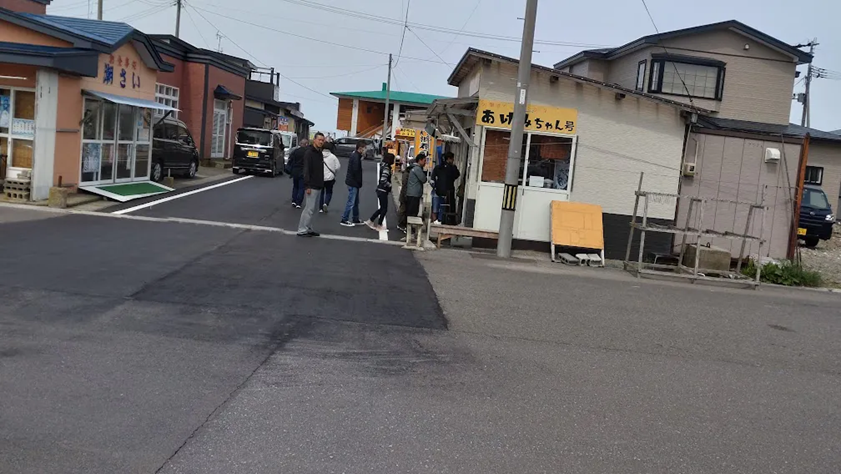
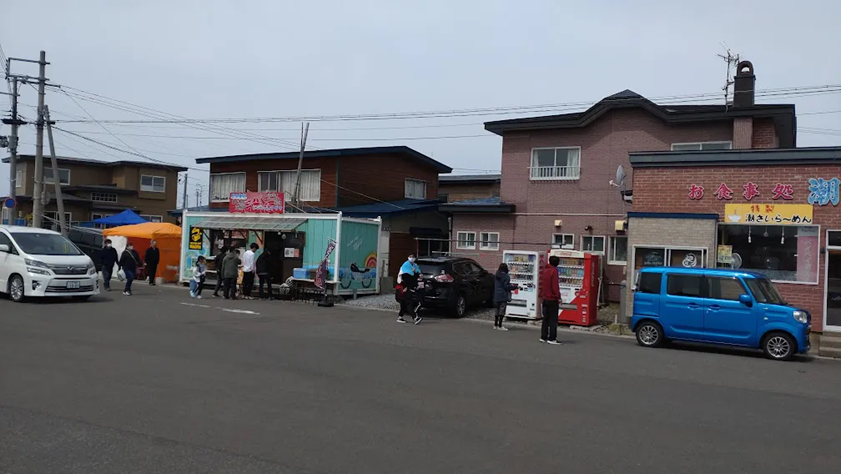
I found a place where the line wasn’t too crazy and decided to go in.
There were a lot of customers getting takeout, so I waited about 10 minutes before getting inside.
They had a variety of dishes on the menu, but since I wanted to try a little bit of everything, I asked to change the tuna, scallop, and octopus rice bowl into a set meal.
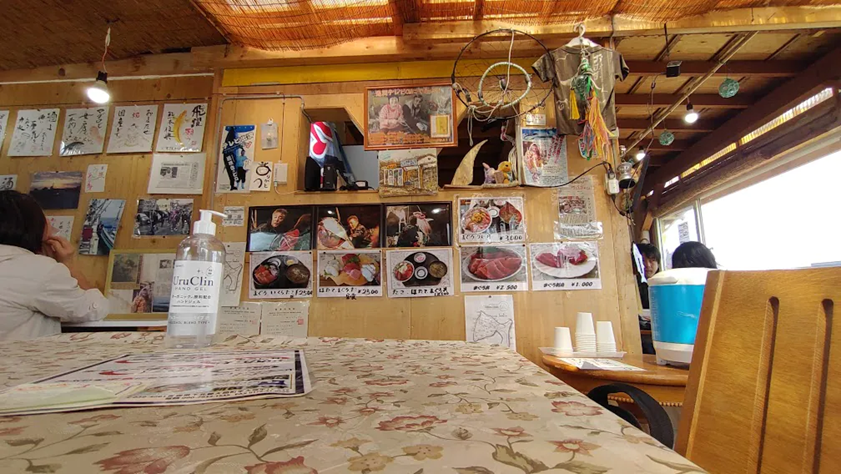
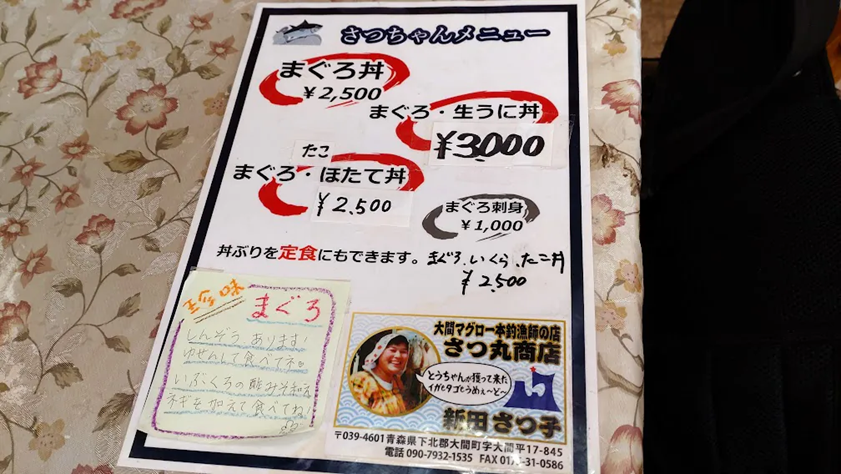

The price was 2,500 yen.
It might be a bit of a tourist price, but it tasted great, so I’ll let it slide.
After finishing my meal, I wandered around the northernmost area.
Riders were coming from all over the place, but I noticed that quite a few had pretty bad manners.
Like revving their engines to intimidate pedestrians—what era are they stuck in?
When you’re riding with loud exhaust pipes, I’d really like you to be more considerate than anyone else.
It’s just my impression, but it feels like the older guys who can’t let go of the past have worse manners than the younger riders.
Our generation needs to set the example… seriously.
Having enjoyed both the scenery and the food, I decided to head south along the Pacific coast.
Along the way, I stopped by “Shiogama Shrine.”
Apparently, the Shiogama Shrine in my hometown is the main shrine, and it seems that they used to make salt in this area as well.
So, I decided to pay my respects here too.


I prayed for a safe journey and continued heading south.
The next place I visited was Shiriyazaki Lighthouse.
You might not immediately recognize the name, but how about “Kandachime“?
This whole area is a grazing ground for Kandachime horses.
This time, I could only see the horses in the stable, and since it was super crowded, I’ll skip showing the horses.
Instead, I decided to climb up the lighthouse.



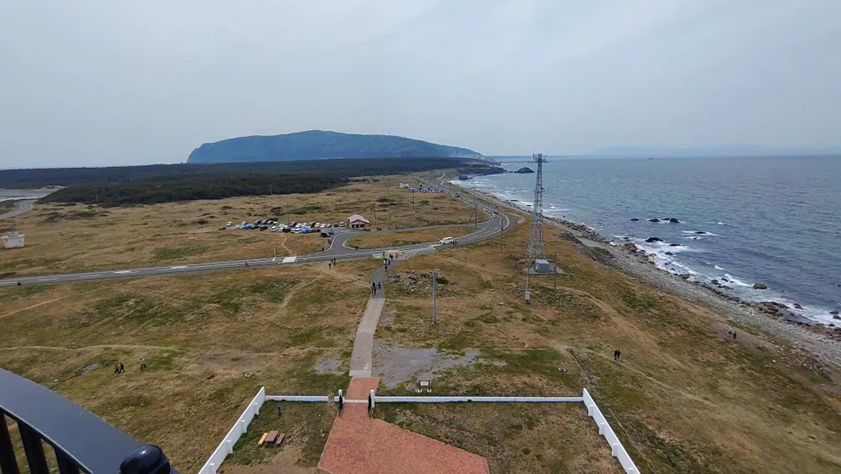
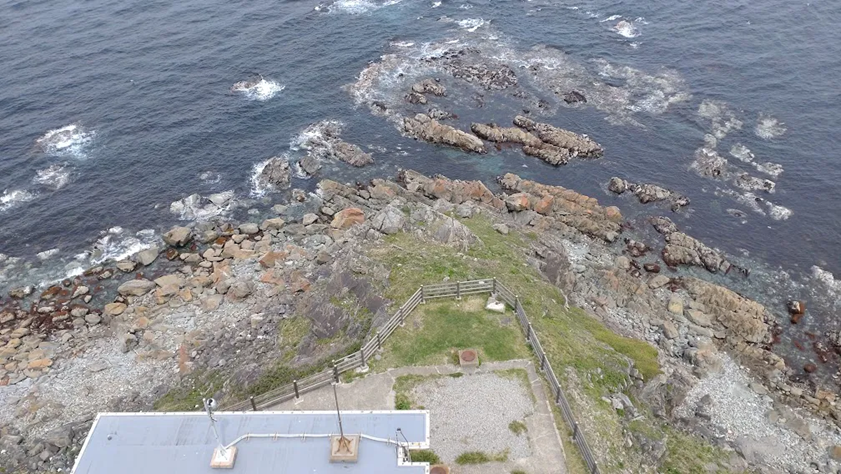

If you pay the 300-yen admission fee, you can climb quite high and even enjoy the view from the outside.
It’s a thrilling experience.
In these times, it’s pretty rare to be able to walk around outside like this.
Of course, the view is breathtaking, but looking straight down gives you that gut-churning feeling.
After fully enjoying the scenery, I headed towards Misawa.
Misawa city
After about an hour and a half of riding, I arrived in Misawa City.
As I headed from Misawa Airport towards the U.S. Misawa Air Base, the signs gradually started showing more and more alphabets.
It kind of has a similar vibe to Yokota Air Base.
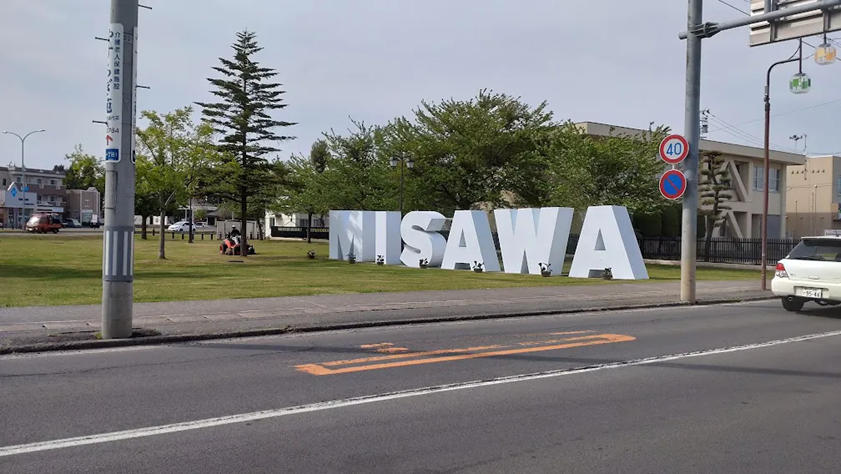
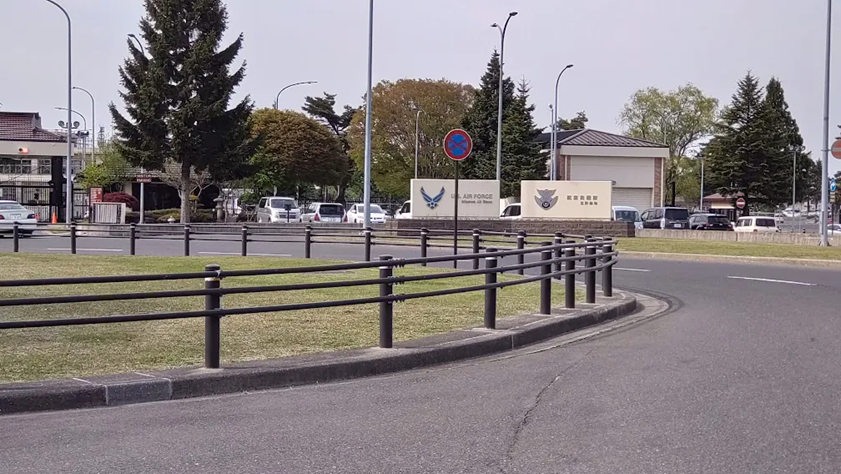
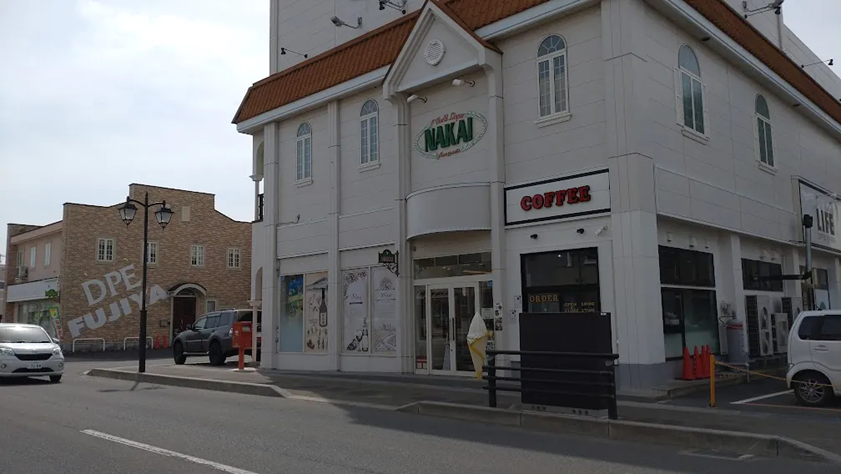
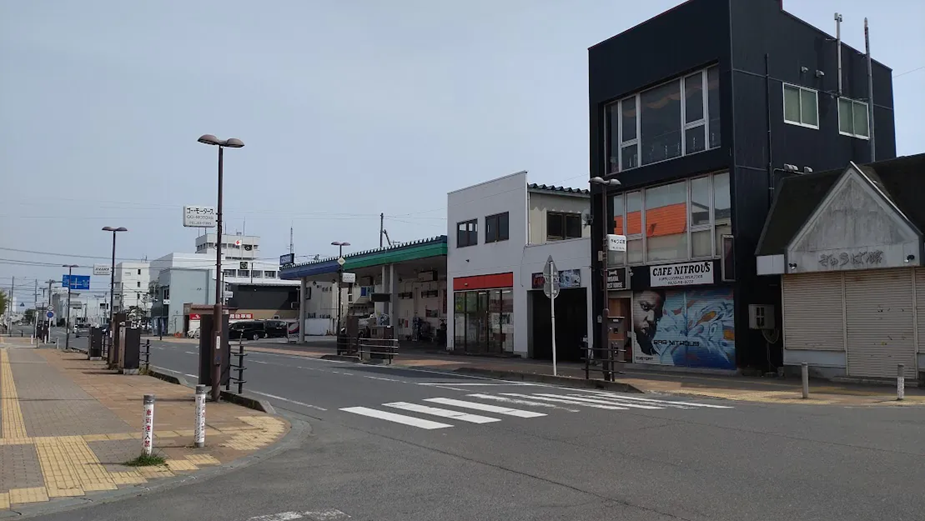
I was getting hungry, so I decided to have a late lunch here.
I picked a place called “Cafe Doggies,” located right in front of Misawa Air Base.
It was just a coincidence that it was easy to park the bike there, but I was surprised to find it was a dog café.
I couldn’t tell whether the dogs belonged to the customers or the café itself, but they came right up to me like,
“Oh! Someone’s here! Smells a bit funny!”
They didn’t just serve human food but also had meals for dogs.
It was pretty heartwarming and gave some comfort to my tired body and soul. (laughs)
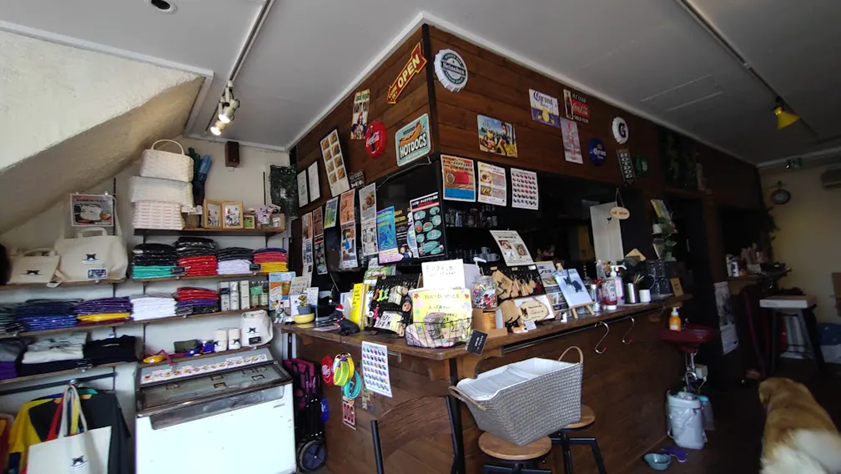

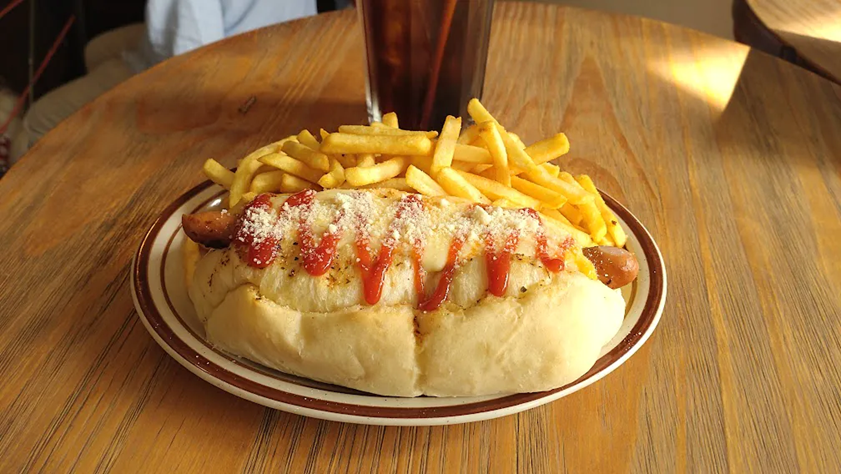
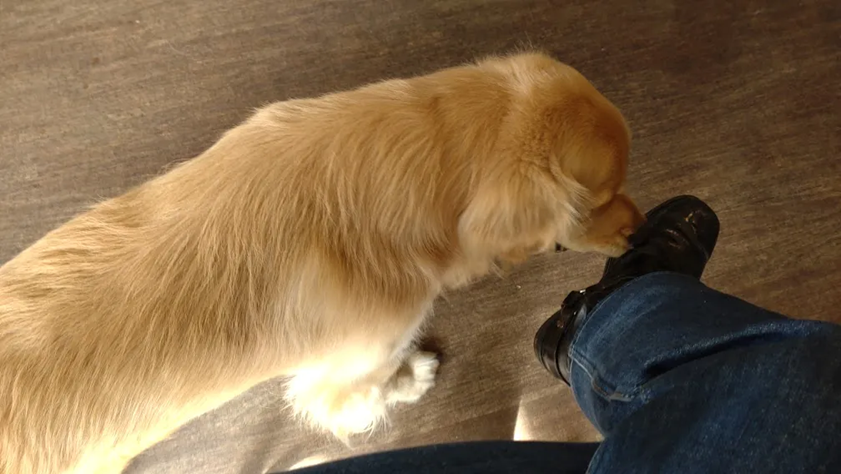
It was already past 2:00, so I had to find a campsite…
Originally, I wanted to go to Tane-yama Kogen Campground in Iwate Prefecture, but it’s pretty far from here.
I could use the Tohoku Expressway, but I couldn’t think of a plan for afterward.
Then I thought about this area. For example, the rider from Sendai who camped with me this morning said he was heading to a campsite in Hachimantai.
I tried calling, but they said there was still snow, and the campsite wasn’t open yet…
After thinking it over, I just couldn’t come up with a route for the third day.
I’ve been riding around this area quite frequently these past few years, and nothing really catches my interest.
When that happens, I have only one choice:
head home.
By now it was almost 3:00, and I had about 400 km to ride.
I had already ridden 600 km yesterday, so this would be another tough ride.
If I were with someone, I wouldn’t be so reckless.
Fatigue and lack of concentration can easily lead to accidents.
But this time, I was alone.
I can’t say this out loud, but when I’m solo, I’m pretty damn fast.
Not just fast—I’ve got the stamina to ride for hours on end.
Winding roads can be tough, but straight roads are practically nothing.
Suddenly, this became a new challenge: back-to-back long rides.
It’s not fancy, but I decided to retrace my morning route along the Sanriku Highway.
What worried me was the condition of the machine.
The voltage regulator was fine.
The tires looked good too.
All I had to do was keep piling on the miles.
Staying focused is important, but staying relaxed is just as crucial.
With Amazon Music playing, I twisted the throttle and let it rip.
Just like in the morning, I fueled up in Yamada Town.
The time was 17:30.
Google Navigation estimated about three more hours.
As the sun went down, visibility got worse.
Riding through the darkness makes the scenery fade away, and I start overthinking.
Cars and bikes are so different just because they have a different number of wheels.
In a car, you can drink when you’re thirsty, snack when you’re hungry, and chat with your passenger while the kilometers fly by.
On a bike, though, you’re exposed.
It’s safer to go faster for stability, but that just increases the danger for the rider.
So why ride?
For me, it’s the challenge.
Tonight, I chose to ride home instead of staying somewhere, simply because it felt more like a challenge.
A 1,200 km round trip over two days at my age and with my Z1R—it’s no small feat.
As I blasted through the night, I managed to arrive home 30 minutes ahead of Google’s prediction.
Today’s ride: about 670 km!
Not bad for a challenge!
Travel Budget
Almost forgot to include this.
I made sure to keep track of expenses this time as a kind of memo for future trips.
Next time, I can use this as a reference.
DAY1
- ¥560 – Sanriku Expressway Toll
- ¥435 – Breakfast (convenience store: rice ball and tea)
- ¥1,808 – Gasoline (10.45 liters, 205 km traveled, 19.61 km/l)
- ¥550 – Highway Toll
- ¥1,000 – Lunch (Sashimi set meal)
- ¥2,142 – Gasoline (11.90 liters, 246 km traveled, 20.67 km/l)
- ¥500 – Osorezan Entrance Fee
- ¥550 – Campsite Fee
- ¥560 – Hot Spring (includes ¥50 locker and ¥10 dryer)
- ¥1,760 – Dinner (Beef Stew Set)
- ¥495 – Convenience store (alcohol, juice, toothpaste)
DAY2
- ¥1,448 – Gasoline (8.62 liters, 156 km traveled, 18.09 km/l)
- ¥2,500 – Breakfast (Sashimi set meal)
- ¥3,010 – Souvenirs
- ¥1,264 – Gasoline (7.48 liters, 145 km traveled, 19.3 km/l)
- ¥300 – Cape Shiriya Lighthouse Admission
- ¥1,490 – Lunch (Hot Dog and Coffee)
- ¥1,263 – Gasoline (7.26 liters, 136 km traveled, 18.73 km/l)
- ¥1,514 – Gasoline (8.75 liters, 177 km traveled, 20.22 km/l)
- ¥560 – Sanriku Expressway Toll
DAY3
- ¥1,760 – Gasoline (11.21 liters, 220 km traveled, 19.62 km/l)
Total: ¥25,469


コメント